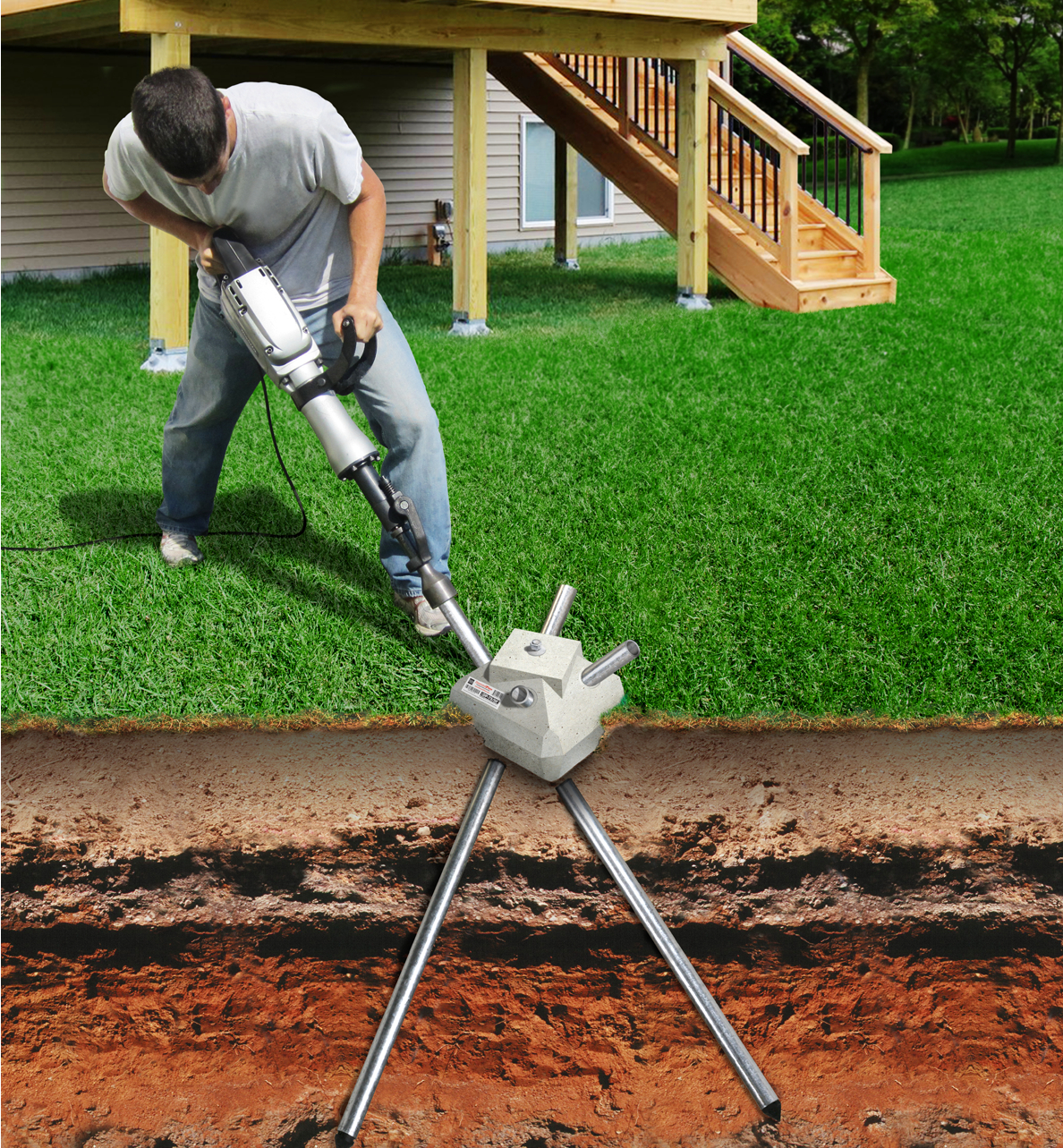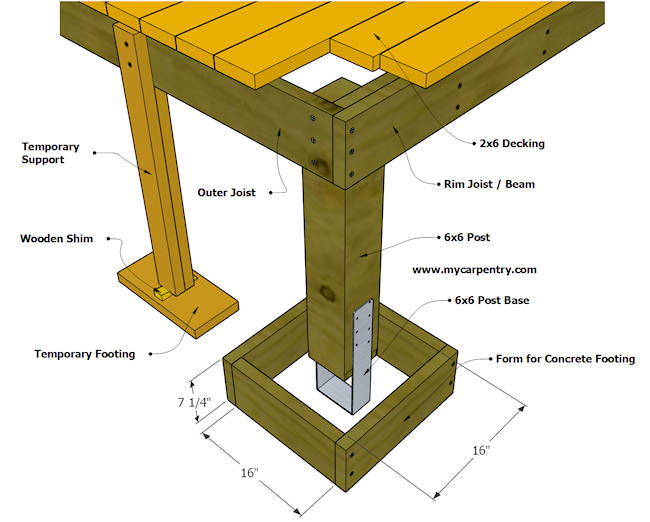Structural Integrity Matters: Selecting the Right Deck Footings for Your Outdoor Job
Structural Integrity Matters: Selecting the Right Deck Footings for Your Outdoor Job
Blog Article
Specialist Tips for Installing Deck Footings to Assistance Your Outdoor Area
When it comes to developing a deck, one of the most essential aspects to think about is the setup of correct footings. These footings are the structure upon which your outdoor area will certainly relax, giving security and assistance for years to come. What precisely does it take to mount deck footings properly?
Relevance of Proper Deck Grounds
Appropriate deck footings are necessary for guaranteeing the security and long life of your outdoor area. When constructing a deck, it is critical to pay attention to the foundation on which it will rest. Deck grounds supply the necessary assistance for the entire structure and help disperse the weight equally - Deck Footings. Without strong and correctly installed footings, your deck may end up being unpredictable, resulting in safety hazards and expensive repair work.

Along with security, proper deck grounds likewise contribute to the long life of your outdoor room (Deck Footings). Grounds that are designed and built to stand up to the aspects and dirt problems in your location will certainly aid protect against the deck from moving or resolving over time. By making certain the grounds are effectively sized and installed, you can decrease the threat of damage to the deck framework, extending its life expectancy and decreasing the demand for costly repair work or replacements

Picking the Right Sort Of Grounds
When choosing the ideal kind of grounds for your deck, it is essential to take into consideration factors such as soil conditions, neighborhood building regulations, and the general layout of your outdoor room. The sort of footing you pick will certainly play an important duty in making certain the stability and durability of your deck.
One common type of footing is the concrete footing. Concrete footings are suitable for a lot of dirt problems and offer excellent assistance for decks. They are commonly installed listed below the frost line to stop shifting and resolving due to cold and thawing cycles. An additional alternative is helical piers, which are excellent for locations with unpredictable soil or high water tables. These piers are screwed into the ground and supply strong support for the deck.
In some cases, you may require to utilize specific grounds, such as heap grounds or deep structures, if you are developing a big or multi-level deck. These grounds are designed to distribute the weight of the deck over a larger area, ensuring security and preventing clearing up or sinking.
Prior to picking a sort of ground, it is important to get in touch with local building codes and laws to guarantee conformity. Furthermore, consider the layout and intended usage of your exterior space. Aspects such as the size, form, and load-bearing demands of your deck will influence the kind of footing that is most suitable.
Preparing the Ground for Footing Installment
To correctly prepare the ground for footing installation, it is important to analyze the dirt conditions and take needed steps to make sure security and sturdiness of the deck. The first step is to dig deep into the location where the footings will be installed.
Once the area has actually been excavated, the next action is why not try these out to portable the dirt. This can be done making use of a plate compactor or by using a hand tamper. Condensing the soil helps to remove any gaps or air pockets, which can lead to resolving and instability over time.
After condensing the dirt, it is important to lay a layer of gravel or smashed stone at the bottom of the excavation. This will supply drain and assistance to prevent water from merging around the grounds, which can bring about disintegration and instability.
Step-by-Step Overview to Setting Up Deck Footings
After appropriately preparing the ground for footing setup, the next step is to start the process of mounting deck grounds. This detailed overview will certainly supply you with a clear understanding of exactly how to mount deck grounds for your outdoor space.
Figure out the place: Begin by marking the placements of the deck footings using stakes and string. Make certain that the locations straighten with the design and format of your deck.
Dig the holes: Utilize a message opening digger or an auger to dig the openings for the footings. The deepness and size of the openings should be in accordance with regional building regulations and the details demands of your deck style.
Degree the holes: Use a degree to make certain that the holes are dug to the proper depth and are degree with each various other. (Deck Footings)
Add crushed rock: Location a layer of crushed rock at the base of each opening to boost water drainage and protect against the wood from decaying.
Put the grounds: Position the footings into the openings, ensuring they are level and plumb. Utilize a degree and a determining tape to make sure precision.
Secure the footings: Pour concrete into the holes around the grounds, filling them to the top. Make use of a blog post degree to make sure the footings continue to be degree as the concrete sets.
Enable time for healing: Allow the concrete remedy according to the manufacturer's directions prior to proceeding with the deck building.
Usual Blunders to Avoid During Footing Installation
One essential aspect to take into consideration during the installation of deck grounds is avoiding usual blunders that can endanger the stability and durability of your outdoor space. While deck footings might look like a basic and straightforward part of the building and construction process, ignoring particular variables can bring about pricey fixings and prospective safety and security hazards down the line.

Furthermore, ignoring to set up appropriate water drainage steps can create water to collect around the footings, bring about rot, degeneration, and the ultimate weakening of the deck's foundation. Making use of the wrong kind of footing product or falling short to adequately secure the grounds can jeopardize their structural honesty.
To avoid these blunders, it is necessary to seek advice from with an expert or comply with sector guidelines to make certain correct footing setup. By doing so, you can make certain the stability and long life of your outside area, offering a enjoyable and risk-free environment for several years to find.
Final Thought
To conclude, mounting appropriate deck grounds is important for the stability and durability of your outdoor area. By choosing the right kind of grounds and appropriately preparing the ground, you can guarantee a strong foundation for your deck. Adhering to a step-by-step overview and avoiding usual blunders throughout footing setup will additionally boost the sturdiness and security of your deck.
Appropriate deck footings are crucial for ensuring the security and long life of your outdoor space. The grounds serve as a connection between the ground and the deck, permitting the weight of the deck and its owners to be spread equally right into the dirt.One common kind of ground is the concrete ground. Place the footings: Place the footings right into the holes, making certain they are level and plumb. Safeguard the grounds: Put concrete into the openings around the grounds, filling them to the top.
Report this page